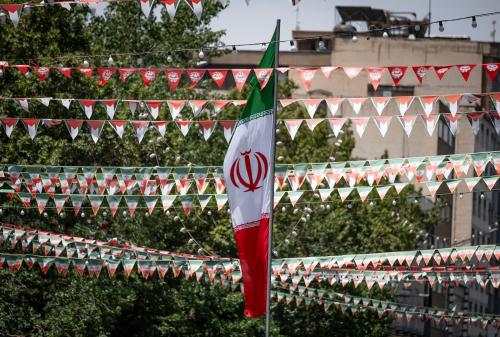William W. Kaufmann, the legendary defense analyst and by any measure one of the greatest scholars in Brookings’ nearly century-long existence, died on December 14 at age 90. As one of his successors here—though his shoes were of course impossible to fill—I would like to offer a tribute. Together with Josh Epstein, John Steinbruner, Bruce Blair, Janne Nolan, Paul Stares, Dick Betts, Marty Binkin, Tom McNaugher, Michael McGwire, and others, he formed the storied “D team” at Brookings in the 1980s and early 1990s. The likes of such a group of defense analysts has rarely been seen—except perhaps in previous eras of Kaufmann’s own career, when he helped lead and inspire such groups at RAND and other institutions.
##1##
I have been thinking about Kaufmann more than usual while writing a defense textbook over the past year. Time and again, I found myself going back to his last book, published in 1992, for ideas and inspiration. Even though it is more than 15 years old, it contains some of the clearest and most usable defense budget methodology available. That remains true even today.
To understand just one of Kaufmann’s many contributions, consider this hypothetical question—which was of course a very real one in many eras of his career: How much would the United States save if, for example, the U.S. Army were to reduce its force structure by one division? Ask this question of the Army itself, or even the Congress and its research agencies, and you’d likely get a question of maybe a billion dollars a year—a very modest number given the size of the defense budget. That is because, literally speaking, cutting a division only directly and immediately saves costs in people and fuel and the like. It does not save much money in equipment per se (which has usually already been bought for a given division at a given moment), or in the Army’s “non-divisional assets” like all the engineering and maintenance and quartermaster and related logistics capabilities that constitute the majority of its forces.
Kaufmann however would use his considerable knowledge and experience to say, not so fast. He would point out that, to use round numbers, the Army spent maybe $100 billion a year on a force structure that centered around a dozen or so active-duty divisions. Kaufmann pointed out that most Army support structures existed to support these divisions, most bases were designed to field them or their support units, most weapons purchases ultimately equipped them, most pension costs focused on their soldiers or on soldiers who helped sustain them, and so on. This logic led him to estimate annual costs per division of maybe $6 billion (to use a rough number for illustrative purposes here), focusing his readers and policy audiences on the potential for large savings at least over the long term if force reductions were prudently pursued.
This vignette focuses of course on just one period of Kaufmann’s long career and one aspect of his work. To cite one more example, Kaufmann also helped people understand how much of the U.S. defense budget was devoted to various regions around the world. Again, the official answer to such a question was usually opaque—ask the Pentagon how much the United States spent per year defending Europe, or Japan, or Persian Gulf oil, and it would reply that it didn’t do accounting that way and couldn’t really answer. At one level, the Pentagon was right, since forces usable in one place could always also be used elsewhere if needed. But Kaufmann again insisted on transparency and clarity. Without reasonable estimates for such questions, he believed, no one could have a serious debate about allied burdensharing. Nor could they understand how much the United States spent ensuring access to Persian Gulf oil. Arguably, if people had listened to Kaufmann earlier, we would have had a more serious debate about alternative energy economies much sooner in our history.
Earlier in his career, Kaufmann challenged the “mutually assured destruction” logic of nuclear war plans and helped encourage a reinvigorated NATO effort to defend Western Europe using conventional military forces instead of atomic bombs. Other examples abound. Through more than half a century of service to the country, and several decades of involvement at Brookings, he contributed to many such debates. He also created a role model for many defense analysts who have followed, a number of whom were his students or proteges. Small in size, he was a giant in the field, and a lively and entertaining personality as well. He will be missed
The Brookings Institution is committed to quality, independence, and impact.
We are supported by a diverse array of funders. In line with our values and policies, each Brookings publication represents the sole views of its author(s).



Commentary
William W. Kaufmann
December 23, 2008